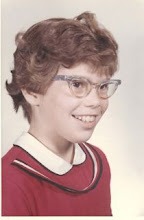 |
| Claudia Mills |
Thank you,
Kirby, for the generous invitation to visit your blog today in celebration of
my brand new chapter book, Kelsey Green,
Reading Queen.
Reviews have started to come in, always a terrifying moment.
So far they are mostly lovely, but two noted that my title character, a third
grader absolutely determined to win a school-wide reading contest, “is
borderline unlikable for most of the contest” (Kirkus) and “isn’t always the most pleasant of third graders – but
she’s 100 percent realistic” (Publishers
Weekly).
So here is my
question: how should I feel about this, given that Kelsey is pretty much me?
 |
| Claudia aka the Reading Queen |
Like Kelsey, I
grew up as a voracious reader. Like Kelsey, I was competitive about reading. I
wanted to read the most books, the longest books, the hardest books. Each
summer I entered the reading contest sponsored by the North Plainfield (NJ)
Public Library, delighted when my name appeared in the paper for having read
the most books in my grade. I know what it’s like to want to do nothing but
read all day long, shunning other activities. I was so pleased when, once I had
children, I read in a parenting magazine that the best thing you can do for
your children is let them see you read. I was on track to be the best mother
ever!
But according to
Kirkus and Publishers Weekly, obsessive and competitive readers aren’t all
that likable and pleasant.
Oh, dear!
The larger
writing question I’m thinking about here is how authors can create “borderline
unlikeable” characters that readers can care about and root for. We certainly
don’t want our characters to be perfect people (I hate perfect people myself).
We want them to have flaws because otherwise they can’t learn from their flaws
and overcome them. But how flawed is too flawed? How can flaws be made
appealing?
I think the
answer has something to do with what Brenda Ueland, in her wonderful book If You Want to Write, calls “microscopic
truthfulness.” If a character is willing to be fiercely honest about her flaws,
her candor disarms us. And it helps hugely if the reader can wince with rueful
self-recognition: if the character’s flaws are ones we share. Poet Billy
Collins wrote, "I don't think people read poetry
because they're interested in the poet. I think they read poetry because
they're interested in themselves."
I’m lucky that
I could give Kelsey quintessential reader
flaws, and that my audience – naturally! - is readers. I hope readers will see
themselves in Kelsey, because they, too, are book-gobblers who do not want to leave
off at the exciting part to attend a sibling’s band concert or to pay attention
in math class. Yes, for better or worse, I am Kelsey, but I’m confident that
many of my readers are Kelseys, too, people of various degrees of likeability
who want nothing more in this world than to be left alone to READ.
from Kirby: I would write a really scintillating conclusion here, but I am too busy reading Kelsey Green, Reading Queen.



Thanks for this interview. I appreciate Claudia's willingness to speak with candor about herself, her character, and her reviews! I'll keep this all in mind as I write.
ReplyDeleteThanks Kirby for featuring Claudia and this discussion about flaws in our characters. I haven't read the book but will certainly do so ASAP. I commend you, Claudia, for portraying a "100% realistic" character. I think even young readers can always learn something from raw realism.
ReplyDeleteI couldn't find your book on Good Reads. How do we get it on there?
ReplyDeleteDawn, I just checked on GoodReads and Claudia's new book is there.
ReplyDelete